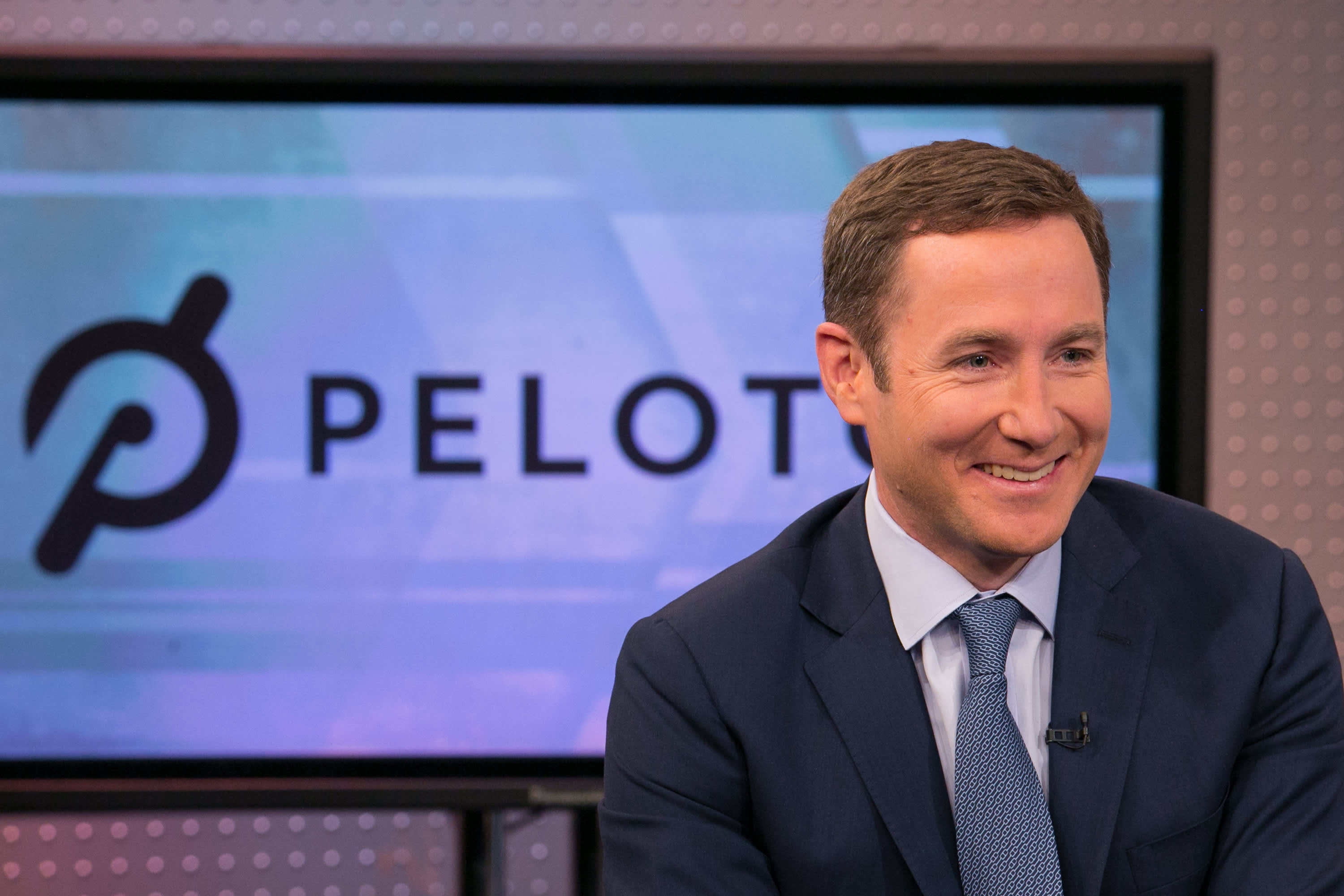
Peloton is reportedly overhauling its C-suite, cutting hundreds of other corporate jobs and slashing millions of dollars in annual costs as it hopes to win back investors’ confidence and reset its business for growth coming out of the pandemic.
The connected fitness company plans to replace CEO John Foley and cut 2,800 jobs, or about 20% of corporate positions, according to a report in the Wall Street Journal.
Barry McCarthy, the former chief financial officer of Spotify and Netflix, will become CEO and president and join Peloton’s board, the report said. It wasn’t immediately clear when the transition will take place.
Peloton shares were falling more than 13% in premarket trading on Tuesday, having closed Monday up nearly 21%. As of Monday, the stock is down about 31% year to date, giving Peloton a market value of $9.7 billion.
The job cuts won’t affect Peloton’s instructor roster or content, according to the Journal. The company employed 6,743 people in the United States as of June 30, more than double the roughly 3,281 employees it counted a year earlier, according to annual filings.
A Peloton spokesperson did not immediately respond to CNBC’s request for comment.
The news of Foley stepping down comes ahead of Peloton’s fiscal second-quarter results, which are scheduled to be reported after the market closes on Tuesday. In January, Peloton reported preliminary quarterly revenue and subscriber figures, but it has yet to address its full-year outlook, which analysts and investors expect will be lowered.
Peloton told the Journal it expects to cut roughly $800 million in annual costs and reduce capital expenditures by roughly $150 million this year.
The company also said in the report that it plans to wind down the development of its Peloton Output Park, the $400 million factory that it was building in Ohio. It said it will reduce its delivery teams and the amount of warehouse space it owns and operates.
William Lynch, Peloton’s president, is also expected to step down from his executive role but remain on the board, Foley said in an interview with the Journal.
Erik Blachford, a director since 2015, is expected to leave the board. And two new directors will be added, the Journal said: Angel Mendez, who runs a private artificial intelligence company focused on supply chain management, and Jonathan Mildenhall, former chief marketing officer of Airbnb.
Roughly a week ago, activist Blackwells Capital — which has a less than 5% stake in the company — sent a letter to Peloton’s board urging Foley to quit his role as CEO, and asking the company to consider selling itself.
Reports have since circulated that potential suitors could include Amazon or Nike. However, Foley along with other Peloton insiders had a combined voting control of roughly 80% as of Sept. 30, which would make it practically impossible for any deal to go through without their approval.
Foley, 51, founded Peloton in 2012. He previously served as the president at Barnes & Noble. Foley also brought on his wife, Jill, to lead up Peloton’s apparel business.
Lynch, a former Barnes & Noble CEO, was brought on by Foley in 2017 to help drive growth.
The duo helped lead Peloton through its highs during the Covid pandemic, when the company saw consumer demand massively pulled forward, as people in the United States and abroad were looking to exercise without going to the gym. But in order to meet that surge in demand, Foley over invested and Peloton was left with a bloated cost structure that it must now restructure in order for the business to survive.
Peloton’s market value had surged to roughly $50 billion about a year ago, but was recently hovering around just $8 billion, before news over takeover talks started circulating.
On Tuesday morning, shares were on pace to open below their debut price of $29. The stock had fallen below that mark on Jan. 20, after CNBC reported that Peloton was adjusting its production levels to meet lower demand.
Foley had said in a statement that evening, “We are taking significant corrective actions to improve our profitability outlook and optimize our costs across the company.”
Investors have since been awaiting details on what exactly those corrective actions will look like.




